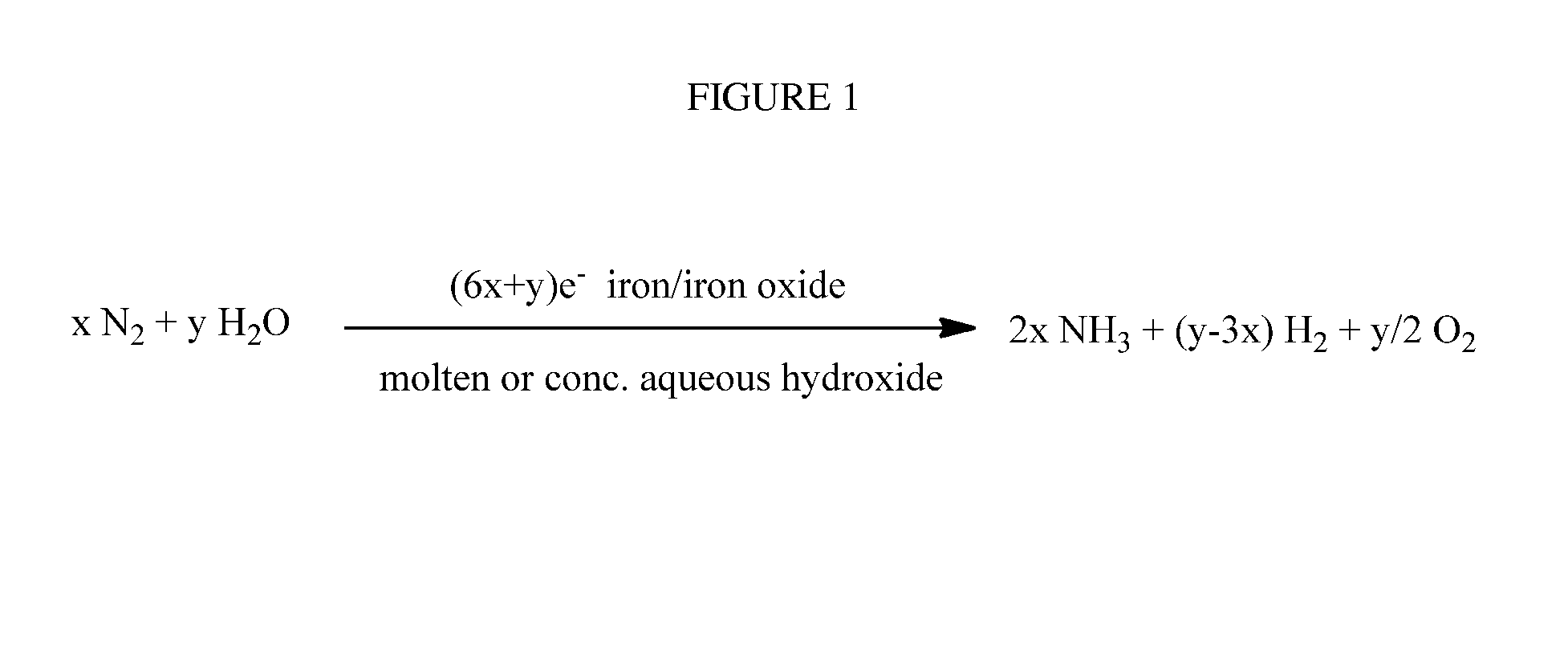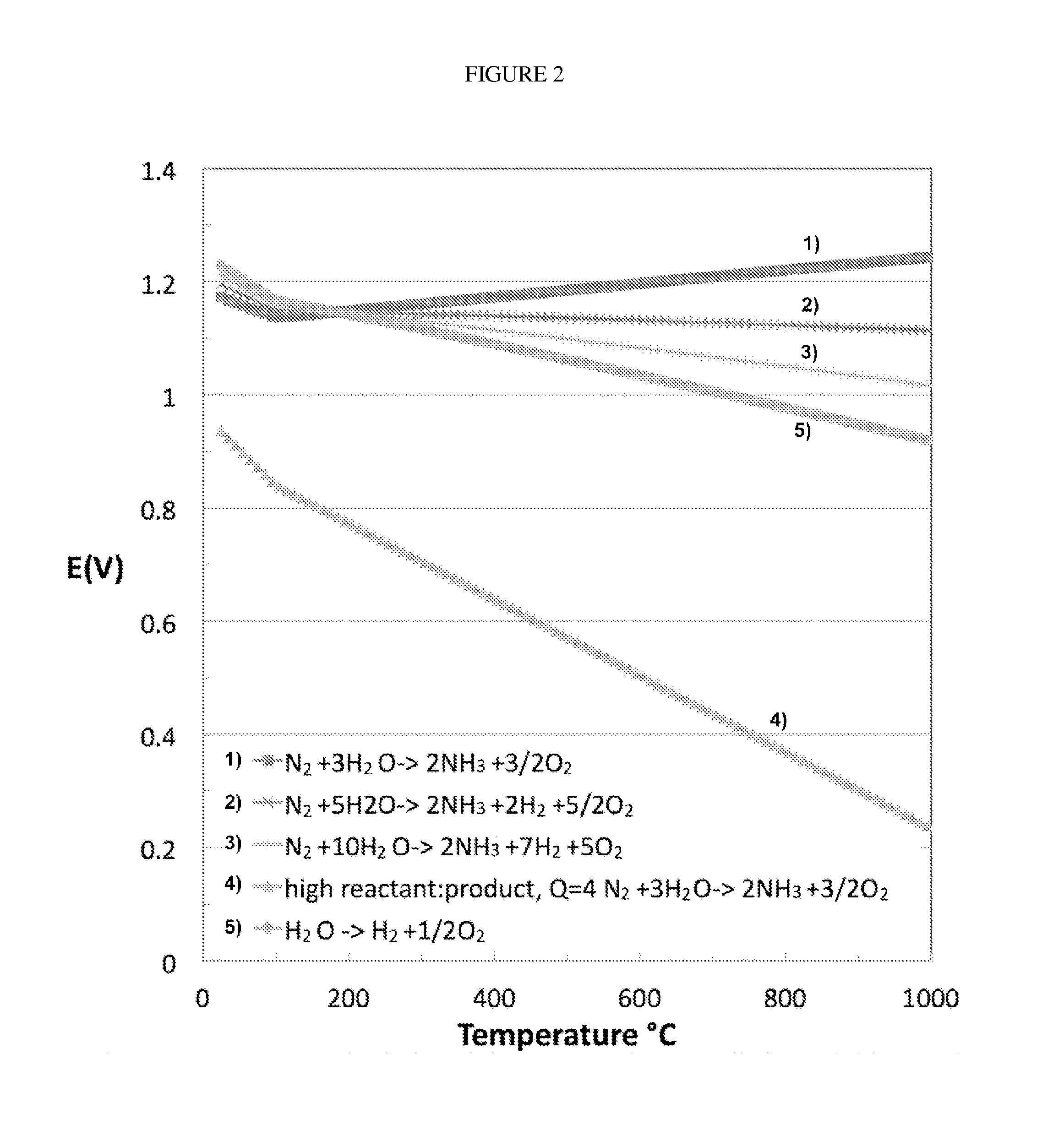Process for the production of ammonia from air and water
a technology of ammonia and air, applied in the field of simple one-pot process for the production of ammonia, can solve the problems of unproven co2 emission sources, energy intensive, kinetically disfavored at ambient temperature and pressure, etc., and achieve the effect of eliminating the evolution of carbon dioxide (co2), low-energy process, and efficient and cost-effectiv
- Summary
- Abstract
- Description
- Claims
- Application Information
AI Technical Summary
Benefits of technology
Problems solved by technology
Method used
Image
Examples
Embodiment Construction
[0059]The present invention relates to a simple one-pot process for the production of ammonia. The process proceeds via electrolysis of air and water using a molten or concentrated aqueous hydroxide electrolyte in the presence of an iron catalyst. The process exhibits one or more of the following benefits: (i) it is an efficient, cost-effective low-energy process, (ii) it eliminates carbon dioxide (CO2) evolution, (iii) it eliminates the need for a separator, and (iv) it bypasses the need for a preliminary hydrogenation step.
[0060]Combining the chemistry of Eq. 3 with that of Eq. 1 in a highly conductive molten hydroxide for the hydrogen generation, and in the presence of an appropriate ammonia catalyst such as iron, provides a one-pot medium for the electrolytic synthesis of ammonia from air and water, according to Eq. 4:
xN2+yH2O→moltenorconc.aqueoushydroxide(6x+y)-iron / ironoxide2xNH3+(y-3x)H2+y / 2O2(4)
[0061]FIG. 1 shows the reaction for the one pot synthesis of ammonia without prod...
PUM
| Property | Measurement | Unit |
|---|---|---|
| particle size | aaaaa | aaaaa |
| melting point | aaaaa | aaaaa |
| melting point | aaaaa | aaaaa |
Abstract
Description
Claims
Application Information
 Login to View More
Login to View More - R&D
- Intellectual Property
- Life Sciences
- Materials
- Tech Scout
- Unparalleled Data Quality
- Higher Quality Content
- 60% Fewer Hallucinations
Browse by: Latest US Patents, China's latest patents, Technical Efficacy Thesaurus, Application Domain, Technology Topic, Popular Technical Reports.
© 2025 PatSnap. All rights reserved.Legal|Privacy policy|Modern Slavery Act Transparency Statement|Sitemap|About US| Contact US: help@patsnap.com



